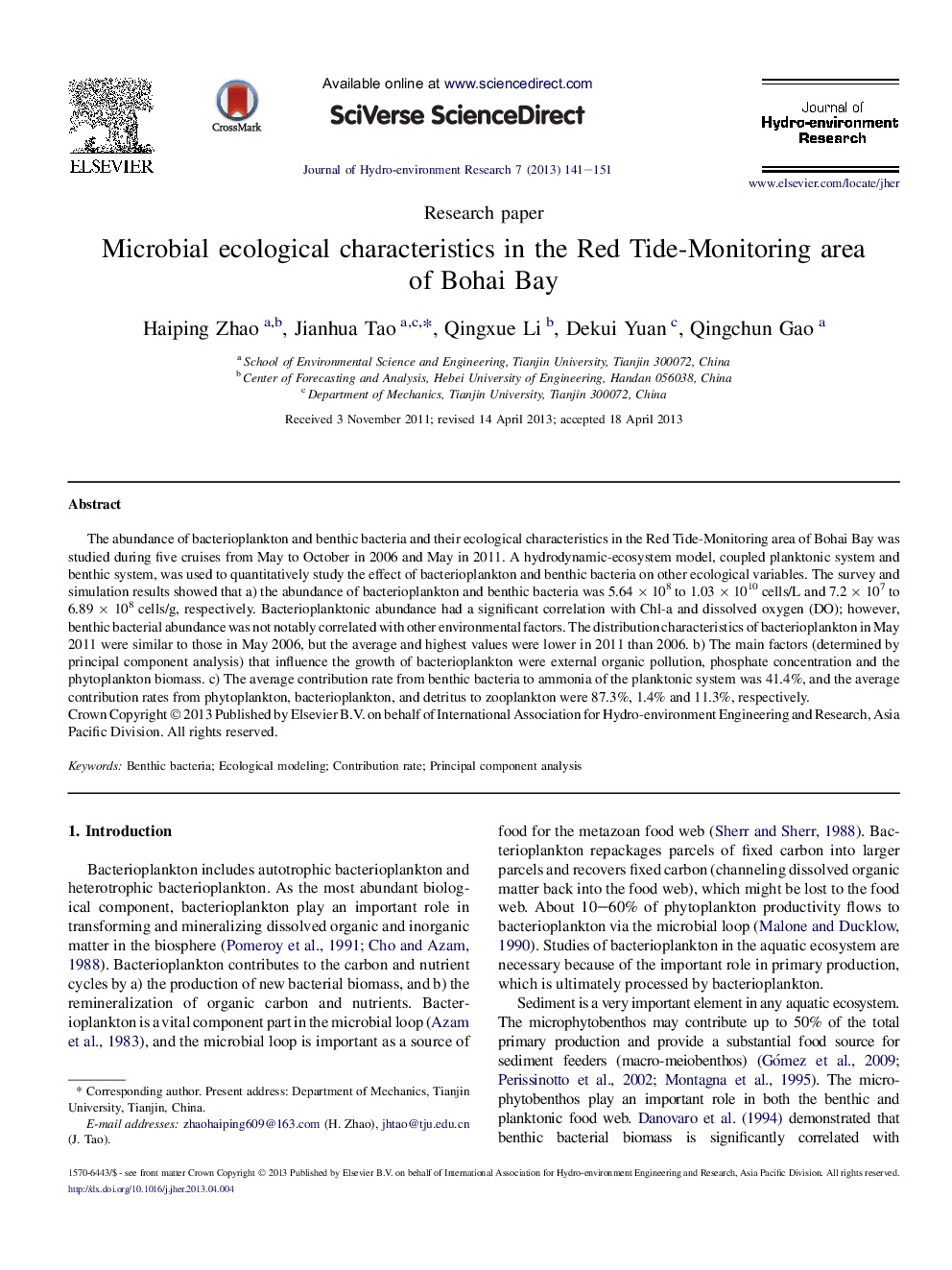| Article ID | Journal | Published Year | Pages | File Type |
|---|---|---|---|---|
| 4493775 | Journal of Hydro-environment Research | 2013 | 11 Pages |
•Surveyed the abundance of bacterioplankton and benthic bacteria in the Bohai Bay.•Organic pollution, phosphate and the phytoplankton were main influencing factors.•The contribution of benthic bacteria to ammonia of planktonic system was 41.4%.•Contribution of phytoplankton, bacterioplankton to zooplankton was 87.3%, 1.4%, respectively.
The abundance of bacterioplankton and benthic bacteria and their ecological characteristics in the Red Tide-Monitoring area of Bohai Bay was studied during five cruises from May to October in 2006 and May in 2011. A hydrodynamic-ecosystem model, coupled planktonic system and benthic system, was used to quantitatively study the effect of bacterioplankton and benthic bacteria on other ecological variables. The survey and simulation results showed that a) the abundance of bacterioplankton and benthic bacteria was 5.64 × 108 to 1.03 × 1010 cells/L and 7.2 × 107 to 6.89 × 108 cells/g, respectively. Bacterioplanktonic abundance had a significant correlation with Chl-a and dissolved oxygen (DO); however, benthic bacterial abundance was not notably correlated with other environmental factors. The distribution characteristics of bacterioplankton in May 2011 were similar to those in May 2006, but the average and highest values were lower in 2011 than 2006. b) The main factors (determined by principal component analysis) that influence the growth of bacterioplankton were external organic pollution, phosphate concentration and the phytoplankton biomass. c) The average contribution rate from benthic bacteria to ammonia of the planktonic system was 41.4%, and the average contribution rates from phytoplankton, bacterioplankton, and detritus to zooplankton were 87.3%, 1.4% and 11.3%, respectively.
